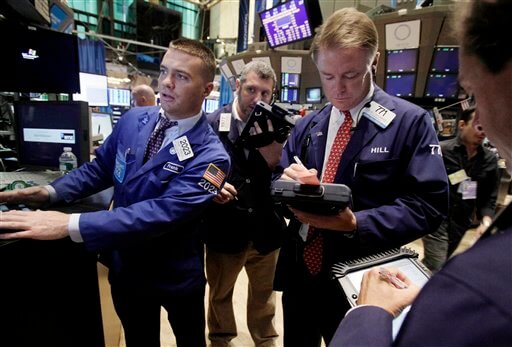
The wildest week on Wall Street in three years sent shockwaves worldwide, but Long Island-based publicly traded companies weathered the storm for the most part.
Trading hadn’t fluctuated as much since the start of the Great Recession in 2008 as the Dow Jones industrial average swung more than 400 points four days in a row last week for the first time in its 115-year history. The week ended on a high note, but uncertainties remained.
“With the market being so volatile, it is very difficult to predict how long it will take to recover,” said Brian Vera, a financial consultant at Meyers Associates. “During these times I think the main component that is driving the markets is fear. Investors are scared and don’t know what to do anymore.”
Bethpage-based Cablevision Systems Corp. finished the week at down to $18.74 after starting the week at $19.52 and the year at $23.49.
Islandia-based CA Technologies rose along with fellow technology stocks to $20.09 per share, up from starting Monday at $19.27 although still down from starting the year at $24.29.
Shares of Carle Place-based 1-800-Flowers Inc. fell 30 cents to $2.39 after starting the year at $2.69 and a prior weekly high at $3.60 in April.
Melville-based Arrow Electronics, Inc. rose from $27.91 Monday morning to close Friday at $31.40.
Pharmaceutical firm Henry Schein Inc., also of Melville, finished the week up $3 per share to $63.10.
“A drop in the stock market that we just witnessed means less confidence in people,” said Vera. “Long Island business owners might be afraid to hire new workers.”
The Dow dropped 634 points Monday, its sixth-worst point drop, as investors responded to Standard & Poor’s withdrawal of the country’s AAA credit rating for the first time in history.
The Dow finished the week down 1.5 percent after being down as much as 6.3 percent. The broader S&P 500 finished the week down 1.7 percent. The technology-focused Nasdaq composite lost 1 percent for the week.
All three major stock indexes are now down more than 10 percent from their April highs. That is a big enough drop to signify what traders call a market correction. A drop of more than 20 percent signifies a bear market.
Cofounder of SmartTradePro.com, D.R. Barton Jr., offered a silver lining.
“This the time when the most money is made if you have the right guidance in the market,” Barton said. “The best time to buy is when there is blood on the streets.”
-With Associated Press



























